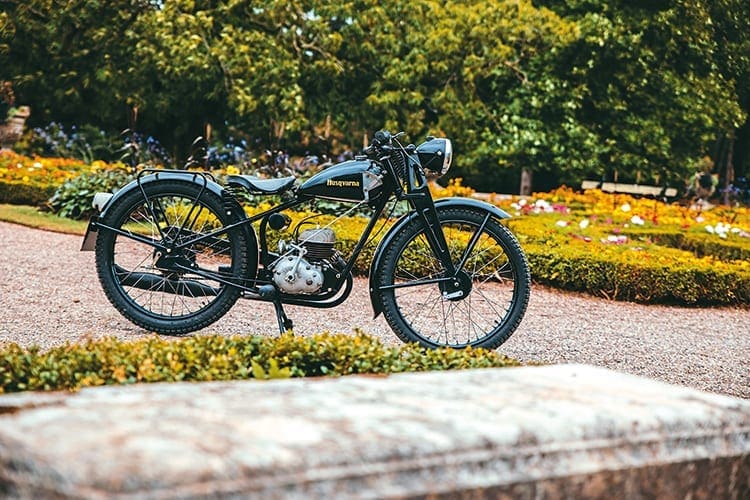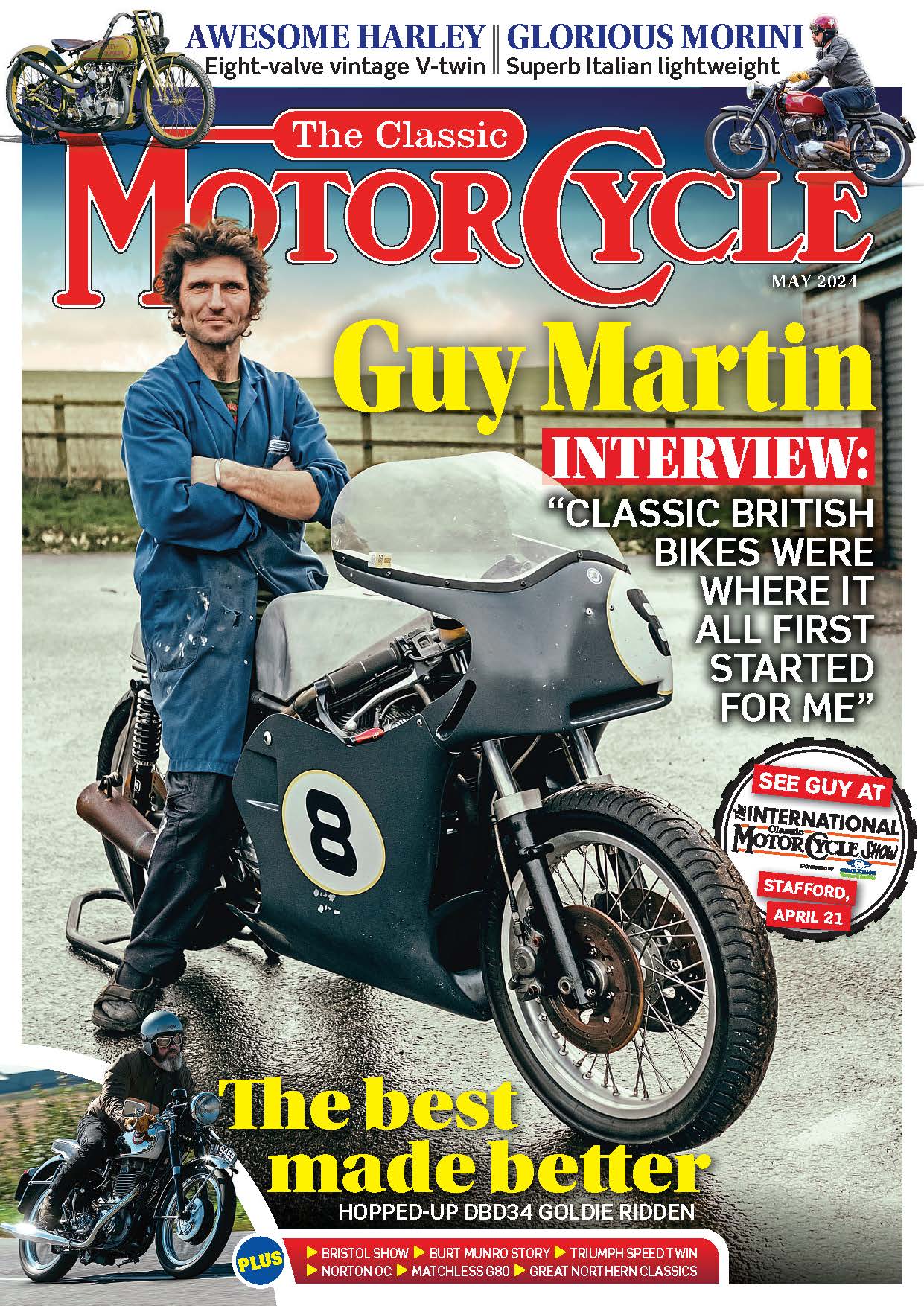
Most of us can recall that magical moment when we first saw the motorcycle of our dreams. For me, it was an August day in the early 1960s when I witnessed Mike Hailwood on his howling MV Agusta win the main race at Thruxton on the Italian ‘fire engine.’ But, for a young lad from Devon, it was when he attended his first motocross meeting, where he both saw and heard a screaming two-stroke with the name ‘Husqvarna’ on the petrol tank.
Resplendent in gleaming red and silver paintwork on its slim petrol tank and purposeful high rise silencer, the Husky hooked the teenage Richard Tupman and 45 years later he now has six of the Swedish off-roaders rubbing handlebars in his south Devon workshop.
Mention the name of Husqvarna and many of us will conjure up a mental image of Steve McQueen in On Any Sunday, perhaps the fabulous V-twin four-stroke raced by Stanley Woods in the 1934 TT, or if you’re a motocross buff, the big, lusty singles campaigned by Bill Nilsson and Rolf Tibblin in the early 1960s. However, it is the lightweight two-strokes (as favoured by McQueen too) with riders like Torsten Hallman, Bent Aberg and Heikki Mikkola in the saddle which dominated off-road events, winning 14 world scrambles titles during the next two decades, that lit the magical touch paper for Richard Tupman.
Enjoy more Classic MotorCycle reading in the monthly magazine.
Click here to subscribe & save.
With an ever-burgeoning collection of Huskies – which includes a rare 390cc automatic and a similar capacity six-speed enduro, plus a genuine Husqvarna ice cream maker – Richard has recently obtained this machine…
It’s a rather humble 118cc two-stroke Model 24 road bike made in 1948 and certainly not a refugee from the racetrack, but one which offered personal transport to thousands of people in those harsh, austere post Second World War years. Other than a good clean with an oily rag, Richard hasn’t had to do any restoration to the little stroker since he bought it in 2017, but before we hear about his own long and varied motorcycling career, perhaps we should briefly reflect on the history of what was once Sweden’s largest manufacturer of motorcycles.
Read more in the January issue of TCM – on sale now!
Advert
 Enjoy more The Classic MotorCycle reading in the monthly magazine. Click here to subscribe.
Enjoy more The Classic MotorCycle reading in the monthly magazine. Click here to subscribe.











